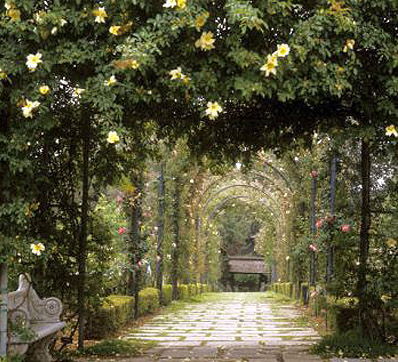
Tuscan Herb and Vegetable Gardens
Traditional Tuscan gardens were designed to be just as practical as they were beautiful, providing an assortment of fresh herbs, fruits, and vegetables that filled the air with a sweet aroma and were used in the kitchen to prepare the rich Tuscan cuisine. Most contemporary Tuscan garden designs feature these same aromatic plants.
Italian herbs can be grown in a variety of containers and make attractive arrangements with very little effort.
Rosemary, sage, basil, and thymeare all common Tuscan garden plants.
There are a number of other plants that can be incorporated into your landscape design to add to your Tuscan atmosphere, including the distinct smelling lavender plant.
An Italian vegetable garden can be tastefully integrated into your Tuscan garden design and can provide you with a selection of fresh foods for your kitchen. Tomatoes, eggplant, colorful bell peppers, and exotic artichoke plants are perfect additions to your Tuscan backyard. The vineyards that scatter the Tuscany countryside can be recreated in your own outdoor area with delicate grape vines.
Choosing the Right Tuscan Garden Plants
There are a variety of Mediterranean plants that can add the charm of Tuscany to your landscape design. Selecting the right combination of these plants, with the ideal planting layout, is crucial to designing a rustic Tuscan garden that blends with the elegance of your home.
You will want to carefully position lush evergreen shade trees, majestic topiary hedges, and enchanting Tuscan fruit trees in the most ideal places, while leaving room for the fragrant herbs, soft lavender, and colorful vegetables that complete your Tuscan style garden.
Creeping vines and fragile flowers, like wisteria and pastel roses, and the rustic charm of grapevines are just as important.




